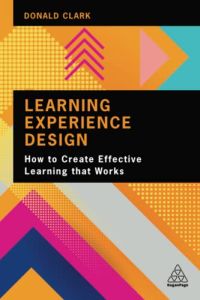Join getAbstract to access the summary!

Join getAbstract to access the summary!
Donald Clark
Learning Experience Design
How to Create Effective Learning that Works
Kogan Page, 2021
What's inside?
So many learners – so many ways to learn.
Recommendation
While repetitive in places and a bit scattershot, this guide to Learning Experience Design (LXD) provides a sound reference manual for designers. The internet has transformed how people learn, but learning itself remains an “effortful” experience. Designers should understand how people learn to deliver experiences with high impact and good retention. Pedagogy struggles to keep pace with all the new ways people encounter information: interactive videos, podcasts, video talks and how-to videos on YouTube, among others. LX designers should follow the approach of “less is more” to maximize engagement.
Summary
About the Author
Donald Clark is a visiting professor at the UK’s University of Derby and the founder and CEO of Wildfire Learning.

























Comment on this summary